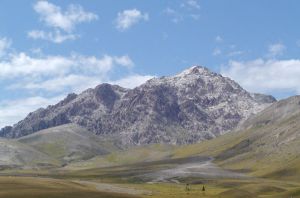THE mountains of Italy are covered with tall pines, great beeches, and spreading chest nuts. Vines and olives are planted in the valleys and on the hills. On the roadside and in the gardens roses, camellias, and lilies grow in profusion. So, too, in the gardens of Paradise there are saints who, by loftiness of intellect, have raised themselves, like the cedars of Lebanon, high above their fellowmen. These are the Augustines and the Chrysostoms. Others, like the beech and the chestnut, have spread their loving arms to shelter and protect great families of religious men and women. These are the Benedicts and Dominics. Saintly penitents and confessors are the vines and olives, made fruitful by the plough of probation and the pruning knife of penance. Virgins are the lilies, and martyrs are the red roses and crimson camellias of God s garden. But there are daisies in the field as well as roses in the hedge; there are passion flowers beside the wall as well as pines on the mountain.

Gran Sasso
At the foot of the Apennines, under the shadow of the Gran Sasso of Italy, out of the beaten track of travelers, and hidden from the eyes of men within the walls of a monastery grew a modest passion flower, sweet and beautiful. It was hidden from the world, but not from God. He looked down upon it; His grace bedewed it; His love shone upon it. And then He stooped gently to lift and transplant it to the garden of His saints. This modest passion-flower, that now grows among the more brilliant flowers of paradise, and under the shade of its great trees, is Saint Gabriel, Passionist, known, before he entered religion, as Francis Possenti.
